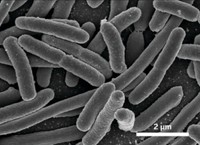Advertisement
Grab your lab coat. Let's get started
Welcome!
Welcome!
Create an account below to get 6 C&EN articles per month, receive newsletters and more - all free.
It seems this is your first time logging in online. Please enter the following information to continue.
As an ACS member you automatically get access to this site. All we need is few more details to create your reading experience.
Not you? Sign in with a different account.
Not you? Sign in with a different account.
ERROR 1
ERROR 1
ERROR 2
ERROR 2
ERROR 2
ERROR 2
ERROR 2
Password and Confirm password must match.
If you have an ACS member number, please enter it here so we can link this account to your membership. (optional)
ERROR 2
ACS values your privacy. By submitting your information, you are gaining access to C&EN and subscribing to our weekly newsletter. We use the information you provide to make your reading experience better, and we will never sell your data to third party members.
Environment
Bumping Up Ethanol Yields
Biotechnology: Simple alterations in fermentations could boost yeast productivity
by Stephen K. Ritter
October 2, 2014

At 25 billion gal produced globally each year, ethanol has made a crucial contribution to transportation fuel supplies. But without much effort, a few tweaks to yeasts and the reaction conditions they operate under could boost ethanol production further and reduce costs, according to two research reports.

Both approaches address ethanol production’s biggest problems: Yeasts used to ferment sugars into alcohols become easily overheated and inebriated. Yeasts are sensitive to the high temperatures they generate while processing sugar in large fermentors. The microorganisms also have low tolerance to the alcohol they are making. The heat and alcohol both affect the integrity of the yeast cell membrane, gradually impairing ethanol production and eventually killing the biocatalytic yeast cells.
“A major challenge in this field is the wide variety of inhibitory conditions encountered by the biocatalyst throughout the production process,” comment Clint Cheng and Katy C. Kao of Texas A&M University in a perspective accompanying the reports. “These two papers exemplify the importance of robust biocatalyst design for industrial fermentation, while also illustrating the need to use a spectrum of approaches to address the challenge.”

In one report, Jens Nielsen of Chalmers University of Technology, in Sweden, and coworkers identified yeast strains that are tolerant to higher processing temperatures (Science 2014, DOI: 10.1126/science.1258137). Operating at higher temperature has the advantage of increasing fermentation efficiency and reducing the energy costs of cooling industrial fermentation reactors.
Most yeasts thrive at 30 °C. But Nielsen’s team found yeast strains that tolerate a temperature closer to 40 °C. Through genomic analysis, the researchers showed that the heat tolerance is mostly a result of altering the composition of yeast sterols––the equivalent to cholesterol in people––that help control cell membrane fluidity. They specifically found that heat-tolerant yeasts have a mutation in a sterol desaturase gene that leads to high levels of fecosterol, a molecule with a bent shape. Most yeasts instead contain high levels of ergosterol, a linear molecule. Fecosterol bolsters the integrity of the yeast cell membrane, enabling continued fermentation at higher temperature.
In a second report, Gerald R. Fink of the Whitehead Institute of Biomedical Research, Gregory Stephanopoulos at Massachusetts Institute of Technology, and coworkers show how increasing potassium ion concentration and hydroxide ion concentration (preventing pH from dropping) in the fermentation medium can modify electrochemical gradients across yeast cell membranes (Science 2014, DOI: 10.1126/science.1257859). By controlling the gradients they can strengthen cell membranes to improve yeast tolerance to higher levels of ethanol and other alcohols. When the team tried to further improve yeasts by modifying them with genetic deletions that increase the activity of potassium and hydrogen ion protein pumps in their membranes, ethanol production exceeded that of industrial strains without altering potassium and pH levels.
“This is good work,” says Henrique V. de Amorim of Brazilian ethanol and sugar research and technology transfer company Fermentec. “But in terms of adapting it to revolutionize industrial fermentation yields, a lot of work still needs to be done.” Higher temperatures mean other problems such as possible contamination by microbes that produce unwanted side products, de Amorim explains. Potassium levels vary widely depending on the sugar feedstock, he adds, and pH that is low can help prevent contamination but impair fermentation. “The art is to adapt or find the yeast that best fits your process.”






Join the conversation
Contact the reporter
Submit a Letter to the Editor for publication
Engage with us on Twitter